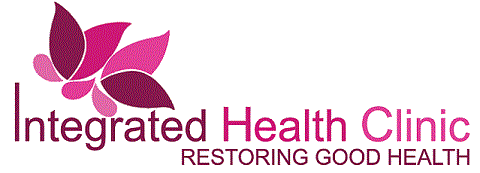A Gluten free diet primarily excludes the protein gluten from the diet. Gluten is usually found in wheat, barley, rye and triticale (a cross between wheat and rye). Some people react to a similar protein found in oats. Celiac disease is the primary reason for a gluten free diet. In this group gluten causes inflammation of the small intestine resulting in chronic diarrhoea, abdominal pain and distension, malabsorption and loss of appetite. A life-long gluten free diet is essential for managing signs and symptoms, but also to prevent complications. It usually forms part of a treatment plan for celiac disease.
Non-celiac sensitivity is also found in some people who experience symptoms e.g. abdominal bloating, constipation, diarrhoea, reflux, indigestion, skin problems, fatigue, joint pains, sinus congestion and low moods. Inevitably they also benefit from a gluten free diet.
Starting a gluten free diet
Starting a gluten-free diet constitutes a considerable lifestyle change and takes time to learn and get used to, but with a growing number of products now easily available in the supermarkets it has become much easier. Once you get settled into it and see the benefits it brings it will become automatic. If this is a new to you then you may want to consult a dietitian or nutritionist for more detailed and individualised advice to ensure that you are still eating a healthy diet.
Besides obvious sources such as bread, pasta, cereals, flour, pizza bases, cakes and biscuits gluten can be found in soups, sauces, ready meals and processed foods. Staying positive despite the dietary restrictions can be a challenge, but you may be pleasantly surprised to find that there are a variety of gluten-free products including bread, pasta, flour and biscuits available in major supermarkets, specialty and on-line stores. Usually symptoms will start to improve after a few days however the period of fuller recovery can be between 6 months to 2 years depending on the individual.
What you can eat
Most healthy eating options are gluten free.
- Unprocessed meat, fish and poultry
- Fruit and vegetables
- Eggs
- Potatoes, rice, lentils and tapioca
- Natural unprocessed beans, seeds, nuts.
- Most dairy products
- Gluten free flours g. rice, soy, corn, potato
- Gluten free processed foods
- Bread, flour, pasta, crackers and biscuits Free from Gluten
Check the Label
For packaged or processed foods, always check the food label for the ingredient list. All UK packaged foods are required to have allergen labelling which will tell you if gluten is one of the ingredients. On some the packaging will clearly state, ‘gluten-free’, ‘very low-gluten’, ‘suitable for celiacs’. Many supermarkets offer lists of Gluten Free products which are freely available on their websites.
What to avoid
- Wheat, barley, rye and triticale.
- Malt, malt flavouring and malt vinegar (usually made from barley)
- Other wheat products such as bulgar, durum flour, farina, graham flour, kamut, semolina, spelt.
- Unless labelled as ‘gluten free’ or made from a gluten free grain avoid the following;
|
o Beer o Bread, cakes and pies o Confectionary, sweets o Cereals o Cookies and crackers o Croutons o French fries
|
o Gravies o Processed/imitation meat or seafood o Pastas o Salad dressing, sauces, soy sauce o Seasoned snacks o Soups and soup bases o Vegetable in sauces |
- Food additives, modified food starch
- Medications and vitamins with gluten binding agents
- Many non-food items such as Glue on lickable envelopes and stamps, art supplies such as paints, clay, play dough and glue may contain gluten.
Alternative gluten products/meals
| Wheat flour | Gluten free flour is available in the shops. Rice flour, almond meal flour, buckwheat flour (not wheat) |
| Chapatti flour |
Gluten free flour is available in the shops, millet flour, rice flour, buckwheat flour, corn meal. |
| Muesli or granola | Gluten free muesli or granola is available in the shops, or make one up yourself |
| Wheat bran based cereal | Chia seed bran, and psyllium |
| Bread |
Gluten free bread |
| Pasta or noodles |
Gluten free pasta is available in the shops |
Cross-Contamination
During the manufacturing process gluten containing products can come into contact with gluten-free foods cross-contaminating them. This risk of this happening is when the same equipment is used to manufacture a range of products. Cross-contamination can also occur in the home if surfaces are not cleaned, or using the same toaster or container.
Health implications
People on a strict gluten-free diet may have lower levels of some vitamins and minerals e.g. iron, calcium, fiber, vitamin B and folate. It may thus be necessary to consult a health professional to consider any nutrient supplementation.
Useful Websites;
Revised: November 2017
